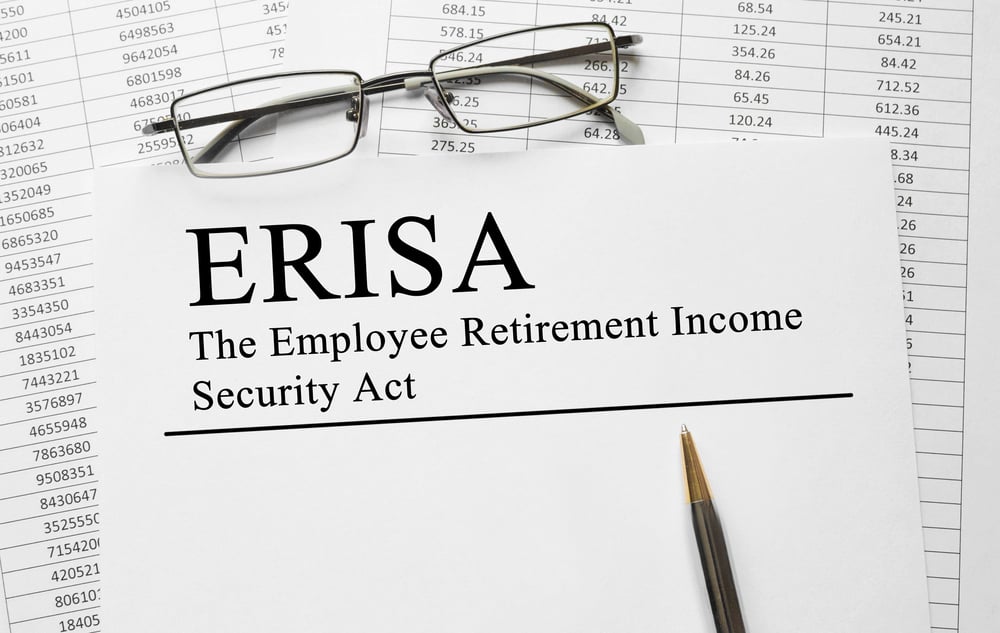
ERISA is the acronym for the Employee Retirement Income Security Act, passed in 1974, which sets standards for private industry retirement plans. The act does not require that any employer offer a retirement program to employees; instead, it established the minimum requirements for those that are provided. Those minimum standards include the following:
Defined benefit plans, which are increasingly uncommon in the private industry, are traditional pension plans in which retirees receive a specific monthly payment. Usually, the amount is calculated by a formula that includes the retiree’s average or final compensation and the number of years of service for the employer funding the pension plan. Employers have moved away from defined employee benefit plans because they are expensive. However, many government agencies still offer them, and some union-dominated industries. As a result, the overall distribution of defined benefit plans has dropped to less than 15%, with only 4 percent of companies offering only a traditional pension and another ten percent using it for some workers combined with a defined contribution plan.
From the employee’s point of view, it’s hard to beat a defined benefit plan. The employee doesn’t have to contribute to it or worry about it; as long as they work the requisite number of years, they can retire with the knowledge that they have a secure source of income. However, for most workers retiring from a private company, the pension benefit is a low amount, unlikely to fully support them in retirement. While the median pension of a federal government retiree is approximately $27,600 (according to data reported by the Pension Rights Center), private pensions and annuities pay out an average of less than $11,000 per year.
Defined contribution plans have risen in popularity while defined benefit plans have dropped. The reason is clear from the companies’ perspective—the responsibility is on the employee to decide how much to invest, and the company does not have an ongoing requirement to provide benefits at a specific dollar amount for retirees. However, many employers also contribute to these plans (common examples are 401(k) and 403(b) plans, which refer to the relevant sections of the Internal Revenue Code that authorize and regulate them.) Typically, an employer will match a portion of the worker’s contribution to the account up to a specified limit.
For example, suppose the employee contributes ten percent of their gross income to the retirement account (deferrals are made on a pre-tax basis, which is an automatic advantage for participating employees.) Then, suppose the employer matches the employee deferral at a 50% rate, up to either a fixed dollar amount or a certain percentage, such as six percent. In most cases, the employer contributions are subject to a vesting period, so the employee does not have full rights to that money until they have been employed for a predetermined time. Let’s look at an illustration:
Joe is employed at ABC Corporation, which offers employees a 401(k). Joe has a salary of $100,000 annually and contributes 10 percent, or $10,000, to his 401(k). It’s worth noting that the IRS limits how much taxpayers can contribute annually, and for 2022 that number is $20,500. There is an extra allowance of $6,500 for participants over age 50, but you can’t contribute more than your compensation. If ABC Corporation matches 50 percent of the first six percent that an employee contributes, the company will provide $3,000 for Joe’s account. There are overall limits to what the company and employees can contribute. The company must also pass nondiscrimination testing for key employees and highly compensated employee participation levels.
If ABC corporation has a standard five-year vesting requirement, then Joe must remain employed at ABC for five years to obtain the full benefit of the employer’s contributions to the plan. If he leaves sooner, he will forfeit some of the money ABC has added to the account. As with defined benefit plans, employers can choose between “cliff vesting,” in which an employee is not vested until a specific number of years, and then receive full vesting, or graduated vesting, in which case the employee earns the right to the employer contributions in increments. If a company selects cliff vesting, the allowable time is shorter than if they provide graduated vesting.
Further, in most 401(k) accounts, Joe has several choices for how to invest the funds. Any gains that the account earns from those investments are part of the funds that Joe can take with him when he retires (or leaves his position at ABC.) Many plans offer professional investment guidance, including a selection of stock funds, index funds, and bonds. Some take the guesswork out of the equation by suggesting that employees choose a risk-weighted portfolio based on their intended retirement date. Ultimately, the performance of the investments does not concern the employer.
There are rules about early withdrawals, loans, and other provisions that govern the administration of 401(k) and similar defined contribution plans.
Profit-sharing and ESOP plans may be regulated by ERISA in most circumstances. A profit-sharing plan is one in which the employer decides each year how much to contribute each year—sometimes in cash, sometimes in company stock. ESOP is the acronym for an employee stock ownership plan, in which the defined contribution plan is invested in the company stock.
Crafting a retirement plan for your employees can be a great recruiting tool, but like any benefit, it can be complex and even burdensome. Talk to your Taylor Benefits Insurance consultant about the protection and opportunity that an ERISA-eligible plan offers for you and your workforce.
We’re ready to help! Call today: 800-903-6066